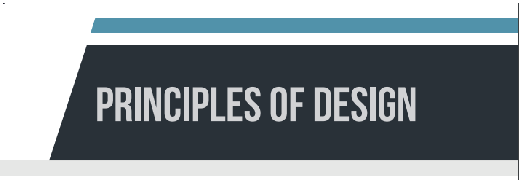By the end of this course, you should be able to:
- Apply design principles in creative works.
- Use appropriate typography in designing creative works.
- Design and develop Websites by balancing aesthetical values and usability.
This course is divided into 10 topics. The synopsis for each topic is highlighted below:
Topic 1 introduces the philosophy of designing graphics. Major issues related to graphic design are addressed. It is important because designing is complex, and requires various skills and tools. This topic covers colours, typography, and layout. From this topic to Topic 6, most discussions are general, not tailored to any specific product. Hence, designing is mapped to the interest for aesthetical values.
Topic 2 discusses the formal elements of design. All elements of design, including line, shape, form, tone, texture, pattern, color, and composition are described, provided with examples and illustrations to make learning interesting. The elements are the foundation that you should know when designing all creative works.
Topic 3 elaborates the impact of colour on designs. It is very subjective, and what evokes reactions for someone may not work similarly for someone else. However, there are some theories you could refer to when deciding on the color for your creative works.
Topic 4 discusses the impact of typography on your design. It is the art and technique of arranging types to make written language legible, readable, and appealing when displayed. For such purposes, you have to mind the typeface, font, point sizes, letter spacing, line spacing, line length, and space between letters. In certain context, your typo could be design elements that positively impact interests.
Topic 5 discusses layout, which is very important for creative works. You can attract your audience through winning layouts. This topic discusses the power of grid structures and offers tips in designing the layout, which include asymmetrical grid, column, and mixed grid.
Topic 6 addresses two very important aspects in designing, form and space. It is a culmination of the discussions in Topic 5, because they are all used to compose your creative works. There are two dimensional and three dimensional form and space, which should be utilised appropriately. Hence, this topic brings to you some examples and their impact. The discussions are equipped with illustrations to support your interest.
Topic 7 discusses the need to balance between aesthetical values and usability. Beginning from this topic, discussions are mapped to designing Websites. Hence, aesthetical values alone are not enough because Websites require not only that, but also require an approach that audience are happy with them. That is referred to as usability. Besides that, the impact of various media elements on websites are also discussed, as a support for both aesthetical values and usability.
Topic 8 outlines ten types of Websites that you could design. There are Websites you need to develop, but at the same time, there are also Websites that you could use free tools that are already available for automatic publishing. This topic basically enhances your awareness on their availability.
Topic 9 discusses elements that make your Websites usable. It also discusses design principles. When you combine them both, you will find that designing Websites is a science, which requires art skills. Your audience should always be in your mind when designing.
Topic 10 stresses that sometimes, web users are burdened with tasks they need not do. There are ways to avoid those tasks, called excise. When you eliminate excise, users will feel wonderful about your Website

